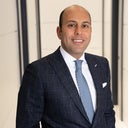Thank you for your openness—this is a challenge many others face as well, even if it’s not often talked about. It's encouraging that you're now taking steps to get the support you deserve. Before proceeding with treatment, the first step is usually an in-depth clinical evaluation, often supported by imaging such as MRI. This helps determine how much silicone is present, whether it has migrated, if there is associated fibrosis or granuloma formation and the depth and distribution (superficial vs deep plane). If the silicone is causing persistent deformity, asymmetry, or chronic inflammation, surgical removal is the most definitive option. This typically involves a direct excision through intraoral or external approaches, depending on the location and extent. Once removal is complete, reconstructive techniques to preserve or restore lip shape. This includes autologous fat grafting from a separate donor site to the lips to restore structural integrity and functional mobility. Non-surgical management may include dermal filler augmentation to restore lip, contour and correct minor asymmetry or divots following the initial excision. Please note - the surgical option is permanent and non-surgical is not and would need to be maintained every 6-12 months. Given your history and description, you may benefit from surgical removal and reconstruction by a plastic surgeon experienced in silicone excision and lip reshaping. I am a board-certified plastic and reconstructive surgeon with a specialized focus on silicone and biopolymer removal. Over the years, I have dedicated my practice to safely addressing complications arising from these materials. Recognizing the unique challenges they pose, I developed a removal and reconstruction technique that is designed to ensure the most complete removal possible while minimizing risks and optimizing patient outcomes. I'd be happy to see you for a clinical evaluation whether it be complimentary virtual consultation or an in-office appointment to discuss your options. (516) 279-2616



